Posted on 3/14/2021
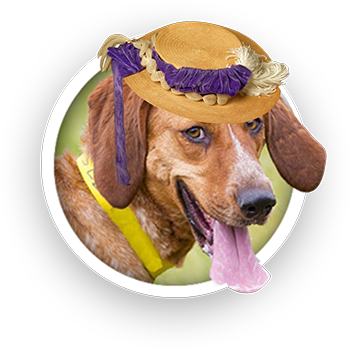
Hello it's Cayenne and even though Spring is around the corner, the mornings are still chilly and most people are not even thinking about their A/C at this time. Guess what, I here to bark to you that it's important now more than ever to make sure your A/C is in tip-top condition when those warmer California days come. So let's chill and get barkin' on Air Conditioning Service with Allied Auto Works.
Most Los Altos drivers worry about a breakdown or a tire blowout on a busy CA highway but don't worry too much about the failure of their air conditioning system. A breakdown on the side of the road can be a miserable and dangerous affair during Los Altos rush hour, but so can a long ride in a hot vehicle.
A lot of Los Altos drivers judge their vehicles' air conditioning systems as “non-essential” and so may neglect them in favor of repairs and maintenance that keep the vehicle running. But preventive maintenance of an air conditioning system is simple and inexpensive, while auto a/c repair can be very expensive.
Los Altos drivers should have the refrigerant in their air conditioning system checked regularly to ensure it is adequate and clean. Air conditioning systems often fail because air and water have contaminated the refrigerant. Air reduces the efficiency of the refrigerant, and water can cause rusting of the system's components. If your refrigerant is contaminated, the system should be evacuated and recharged. This will actually extend the life of your air conditioning system, preventing repairs, and keep it at peak performance.
At Allied Auto Works, we advise our Los Altos customers to run their air conditioner periodically in the winter. This will keep the seals from drying out and cracking, saving them the inconvenience of this relatively minor repair.
Check with your vehicle owner's manual or with your friendly service advisor, Matt at Allied Auto Works for information about how often your vehicle air conditioning system should be serviced.
No matter how long the winter, spring is sure to follow. ~Proverb
Cayenne

Allied Auto Works
2073 Grant Road
Los Altos, CA 94024
650.968.7227
https://www.alliedautoworks.com/
Posted on 3/7/2021


Duke here and can you believe it; March has finally arrived and restrictions are lifting during this challenging time which also means you will be driving more. A lot of my dog friends have asked me if their owners should be using their severe service maintenance schedule, which is in the owner's vehicle manual. It can be somewhat confusing, so I decided to consult an expert, Cricket Killingsworth.......so let's get barkin' with her today!
Cricket Killingsworth is from QMI/Heartland, a manufacturer of automotive products and fluids. She's been in the automotive business for over 30 years and is a speaker, a trainer, and a writer.
Cricket says there's so much confusion on this topic because "Most owner's manuals actually have two maintenance schedules. Sometimes these are called 'regular service' and 'severe service.' Sometimes they're simply called Schedule 1 and Schedule 2. A severe service schedule recommends that things like an oil change, air filter replacement, and transmission service be done more often: either in fewer miles or in less time."
Foreign and domestic vehicle manufacturers create a specific schedule for each vehicle they manufacture. So there isn't one generic schedule that applies to all vehicles. In addition to your owner's manual, Los Altos automotive repair centers (including Allied Auto Works) subscribe to information services that provide the auto maintenance schedules for every vehicle - so they can help Los Altos drivers know when to take care of needed services. Below is a typical definition of severe service.
- Most trips are less than four miles/six and a half kilometers
- Most trips are less than 10 miles/16 km and outside temperatures are below freezing
- You drive regularly in very hot CA weather
- The engine is at low speed most of the time (not on the freeway)
- Stop and go driving
- You drive in dusty or muddy conditions
- You routinely tow a trailer, haul heavy loads or carry a car-top carrier around Los Altos
It's common sense for Los Altos drivers: Just a few minutes at higher speeds allows the moisture in the oil to evaporate. Very short trips, or trips of less than 10 miles when it's very cold, don't allow the engine to heat up enough to get rid of the water. And water in the oil leads to damaging sludge. Also, towing and heavy loads raise operating temperatures and cause fluids to break down faster. Dusty and muddy driving around Los Altos means that more dirt will get past the air filter to contaminate the fuel system and engine oil.
The bottom line is that you need to decide for yourself if the regular or severe service schedule is right for you, based on your driving habits. Look at your owner's manual or talk with your Allied Auto Works service advisor who can help you know which schedule to follow.
Here is what a fleet manager said recently: "Since city miles are generally tougher on vehicles than highway miles, we use the manufacturer's severe service schedule as the basis for our preventative maintenance program. We massage those schedules over time, increasing or decreasing the service intervals so that they make the most sense. There is a little bit of art to go along with the science."
Make an honest evaluation of your driving habits. Unless you do mostly CA highway driving in moderate weather, you'll likely have a fairly good amount of severe service mixed in. Some Los Altos drivers just want to play it safe and follow the severe service recommendations, rather than analyzing how they drive each month.
Ask us for help evaluating your driving and service needs and tell them Duke sent ya,
Duke

Allied Auto Works
2073 Grant Road
Los Altos, CA 94024
650.968.7227
https://www.alliedautoworks.com/
Posted on 2/28/2021


Hello CA! Cayenne here and today's vehicle care topic is: Synthetic Oil vs. Petroleum Based Oil. You are probably wondering what is the difference and today we are going to slip into that subject. So let's get barkin' and slide right in.
Synthetic motor oil is a substitute for petroleum based oil. If you aren't currently using it, why not? Synthetic motor oil maximizes engine power and fuel economy. To see why, we'd need a microscope, so we'll have to settle for using our imaginations. The molecules of conventional motor oil are long hydrocarbon chains. Synthetic motor oil, on the other hand, has uniform, round molecules. Which is slipperier, a pile of pencils or a pile of marbles?
Synthetic motor oil lubricates better because there's less friction. This results in myriad benefits: better wear protection, cooler operating temperatures, more power and better fuel economy. And synthetic oil doesn't sludge up like conventional oil so it prevents those small oil passages from clogging up. (We see that too often at Allied Auto Works in Los Altos.)
Some manufacturers are extending oil change intervals for many models. The added protection of synthetic oil covers you for these longer intervals. Talk with your Allied Auto Works service advisor about how you drive in and see if he thinks you can benefit from synthetic oil for your vehicle. Also ask about the appropriate oil change interval for synthetic, because it may very well be longer than for conventional oil.
Most of us have a busy life and occasionally miss an oil change; go ahead, admit it. Since we're not perfect, doesn't it make sense to use a motor oil that's got your back?
What about price? Petroleum based oil may appear to win out on this point, but let's consider all the facts. Although synthetic oil costs more, it lasts longer, protects your vehicle engine better and increases fuel economy. You'll likely save money in the long run. If you're serious about making your vehicle last longer, consider using synthetic motor oil.
Give us a call. and remember.... "We aren't addicted to oil, but our cars are." ~ James Woolsey
Cayenne

Allied Auto Works
2073 Grant Road
Los Altos, CA 94024
650.968.7227
https://www.alliedautoworks.com/
Posted on 2/22/2021


Cool, well that's me, Duke, and smooth that is what you want your transmission to be. It should shift seamlessly unless you have not been getting the fluid checked and maintained and well that is not cool. So let's get barkin' on my cool and smooth topic today!
When it comes to preventive maintenance on our vehicles, most of us Los Altos drivers remember to get our oil changed. But services that occur at longer intervals — like transmission service — sometimes get overlooked. Yet transmission service is part of car care. A poorly maintained transmission will fail and lead to repairs.
The transmission transfers power from the engine to the drive wheels. When it's clean and well-lubricated, it gives maximum fuel efficiency. But when it gets dirty or worn down, your transmission will suffer. Your transmission relies on transmission fluid to keep everything running well.
This is why the transmission fluid must be changed periodically. Your owner's manual will give you a recommended time schedule for this service. Or, you can ask your friendly and knowledgeable Allied Auto Works service advisor. Generally, the interval is around 35,000 miles (55,000 km) or every two years. But the interval for your vehicle may be shorter or longer.
At Allied Auto Works in Los Altos, transmission fluid can usually be changed while you wait and is simple and not particularly expensive. Compared to the cost of transmission repairs or a new transmission, it's downright cheap! So take some good auto advice from the team at Allied Auto Works and take care of your transmission. It will pay you back in a longer, smoother ride.
and remember.....If you've gotta think about being cool, you ain't cool
Duke

Allied Auto Works
2073 Grant Road
Los Altos, CA 94024
650.968.7227
https://www.alliedautoworks.com/
Posted on 2/14/2021


Hey it's Cayenne and when you hear the word suspension, you may think back to those energetic days of grade school but I'm here to bark to you how important your suspension is to your vehicle and Suspension Service; well that's where my team at Allied Auto Works comes in, so let's get barkin' on Suspension Service and get ready for a bumpy ride.
Well, your vehicle's suspension is actually a good thing because it keeps your vehicle up off the road and helps provide a comfy ride around Los Altos. Its job is to keep your wheels firmly planted over bumps and through curves. Your suspension system has many parts. If you look under your vehicle, it's basically everything that connects your wheels to the vehicle's frame. These are heavy-duty parts that do a lot of work. They need to be inspected for damage and excessive wear at least once a year. A good time for this is when you get your annual alignment service at Allied Auto Works.
Here are some warning signs of suspension problems:
- the car pulls to one side
- it wanders
- the steering is erratic
- you see uneven tire wear
- you experience a poor ride or handling
- you see oil leaking from shocks
Basically, you just don't feel in control when you're driving.
Some suspension parts just wear out with use. Shocks and struts eventually lose their ability to control your ride. Wheel bearings need to be repacked every couple of years. And some suspension pieces need to be lubricated when you get your oil changed. Your service advisor at Allied Auto Works can perform an inspection and tell you what problems you may have.
If you're in an accident, your suspension can be damaged or knocked out of alignment. Even a minor accident, like hitting a curb around Los Altos or even a large rock can mess things up for drivers. With a minor accident it's tempting for many to just get an alignment or wheel balance to correct the problem. But if there's damage, a simple alignment won't actually fix the problem, and you'll just have to align it again after the repairs are made. So if you have an accident, get your suspension system inspected right away. Suspension problems are a major safety issue because they can lead to unsafe handling.
One big cause of suspension damage for Los Altos drivers is potholes – those nasty magnets that form in roads in freezing weather. They seem to draw our tires right into them. Here are some tips for avoiding damage from potholes: First, keep your tires at their full air pressure. That gives tires their maximum resiliency and will hopefully keep your wheels or other suspension parts from crunching on a big hole. Next, just pay attention. When you see a hole you can't miss, slow down before you hit it. Driving at a slower speed will limit the damage and may keep your drink from spilling. But avoid the temptation to brake directly over the pothole. That will cause the car's weight to shift forward and add to the potential damage.
Now, aren't you glad I helped smooth over any confusion you had on suspension,
Cayenne

Allied Auto Works
2073 Grant Road
Los Altos, CA 94024
650.968.7227
https://www.alliedautoworks.com/
Posted on 2/7/2021


It's me Duke and today I am going to bark to the tune about fuel saving. Have you ever gone to listen to an orchestra? The musicians take the stage early and tune their instruments. Each individual instrument must be in tune, but the critical thing is for the entire orchestra to be in tune with each other. That's why they tune up together.
Now this is no surprise; I'm going to relate the orchestra to your vehicle. Your engine has many component systems that each need to be working properly. And the components need to be working in sync, all timed up together in order for the engine to work efficiently.
We call this... (ta-da) a tune-up. When an orchestra's out of tune you get a bad concert. When your vehicle's out of tune you get bad performance and bad fuel economy.
So check your owner's manual for recommended tune-up intervals. Or ask your Los Altos service advisor at Allied Auto Works what he thinks.
...Just be careful not to say you want to make beautiful music together – that kinda makes us uncomfortable.
Duke 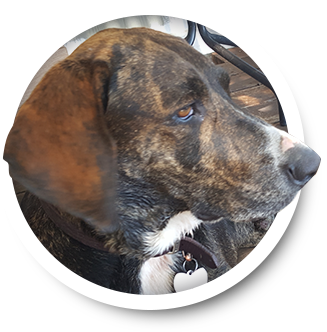
Allied Auto Works
2073 Grant Road
Los Altos, CA 94024
650.968.7227
https://www.alliedautoworks.com/
Posted on 1/31/2021

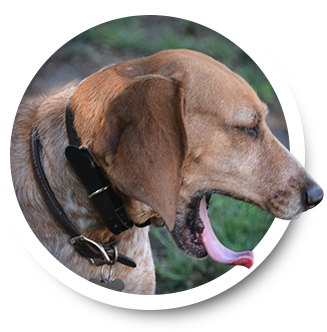
Hey, Cayenne here and I love to keep my cool even in the car during winter by putting on the Air Conditioner. What???? you say. Well believe it or not you should run your A/C in the winter. So let's find out why and get barkin'!
Most Los Altos drivers don't even think about their air conditioner.
Now here's a tip for Los Altos vehicle owners: Run your air conditioner every so often during CA winters. This circulates the lubricant to help keep the seals from drying out.
The air conditioner actually removes some of the moisture in the air. So if you have trouble with fogging on your vehicle windshield during CA winters or during a rain storm, running the A/C on the defrost setting should help. Now on some Los Altos cars you can't run the A/C at the same time as the defroster. Don't ask me why, but I suspect lawyers were involved.
Also, air and water can get into the A/C system. That can reduce the efficiency of the system and also lead to corrosion that causes damage. Los Altos drivers should periodically purge the system and replace the refrigerant to remove the air and water.
CA drivers would be wise to learn the early warning signs of A/C trouble: 1) The air's not as cold as it used to be. 2) It makes unusual noises when the A/C cycles on. Those are signs to get your vehicle into Allied Auto Works in Los Altos before the damage gets worse.
By following the recommended service intervals in your vehicle owner's manual, you can help prevent mechanical failure of your air conditioning system. Your A/C system contains some components like the compressor, condenser, dryer, etc. Anything Los Altos car owners can do to lengthen the life of their A/C is well worth it.
I leave you with this wisdom I know: "You know it's cold outside when you go outside and it's cold."
Cayenne
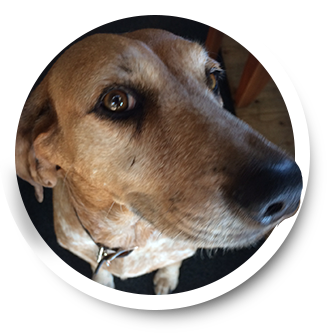
Allied Auto Works
2073 Grant Road
Los Altos, CA 94024
650.968.7227
https://www.alliedautoworks.com/
Posted on 1/24/2021
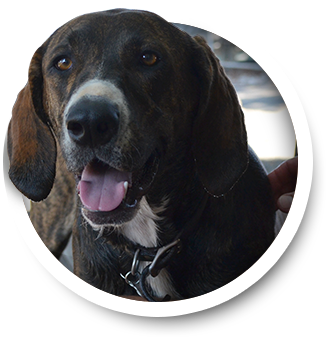
Duke here and sometimes I think I am running in circles.....circles?.....that makes me think of tires. Do you need to buy new tires now that California is starting to see rainy weather (we need it)? Where do you put those new tires if you only need 1 or 2?
When Los Altos drivers need to replace tires, they need to know how many they should get and on which axle they should be placed. Replacing a damaged tire may leave you with three others with significant wear, which could affect your traction control, stability control, and anti-lock brake systems.
If you can’t afford to replace all four tires at once, you should at least replace two on the same axle. New tires should always be put on the rear axle for stability in slippery conditions. Your friendly and professional Allied Auto Works tire professional can help you know when your worn tires should be replaced, if you can have a damaged tire repaired as well as selecting the right tires for your needs.
Give us a call and roll right into our shop, we'll make sure you can tread above water,
Duke
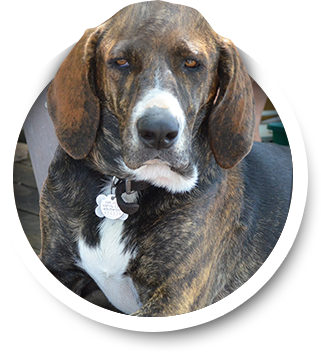
Allied Auto Works
2073 Grant Road
Los Altos, CA 94024
650.968.7227
https://www.alliedautoworks.com/
Posted on 1/17/2021
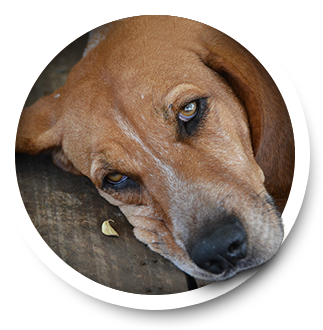
Brrrrrrr.........Cayenne here and these California mornings can feel cold. So believe or not, we are going to bark about snow tires. What? you say, well I guess you will have to plow into my blog today........let's get barkin'!
Remember snow tires? They were basically just regular tires with big, knobby lugs to get them through deep snow. They were loud and rode hard, and Los Altos drivers couldn't wait to get them off the car. Then along came television advertisements for “all-season” radials. CA drivers ran out and bought some and we thought we were done with snow tires forever.
Tires have come a long way since then. Modern winter tires sold in the Los Altos area are much better designed for the wide range of conditions that come with CA winter weather. They are made with a rubber compound that helps them stay flexible in cold weather. Regular tires become hard and stiff at Los Altos temperatures below 45°F (7° C) which reduces their traction. That's a concern in winter, especially with snowy or wet conditions. But it also means that Los Altos drivers are better off with winter tires in cold weather even when it's dry.
The tread design on winter tires has been improved to move snow, slush and water. The lugs and grooves throw packed snow out of the tread as the tire rotates. This means the tread is open and ready to move more snow when it rolls around again. Summer tires can pack up with snow, which makes them more dangerous than a bald tire.
The all-season tire that is popular among Los Altos drivers is a compromise between summer and winter performance. This means they give adequate performance for Los Altos drivers in either season but aren't great in either. Summer tires give great performance in hot weather but lousy performance in winter. Los Altos drivers need to put more thought into their tire choices these days.
If you want the performance that new winter tires can give you, you should have them properly installed by your friendly and professional service advisor at Allied Auto Works. It's best to purchase four snow tires and put them on all the wheels of your vehicle. But if you only want two, you need to put them on the rear of your vehicle, even if you drive a front-wheel drive vehicle. Los Altos drivers always want to put the tires with the best traction on the rear of the vehicle.
For more auto advice about tires for any CA season, ask your friendly and knowledgeable Allied Auto Works tire professional. They can help you find the right tire for your area and for your driving needs. For the best performance from your tires, whatever the season, don't forget preventive maintenance. Keep your tires up to pressure for the best durability, safety and performance, but don't overinflate them. Remember, good car care provides the safest road for all of us in Los Altos.
"The coldest winter I ever spent was a summer in San Francisco." (and no Mark Twain never quoted this)
Cayenne
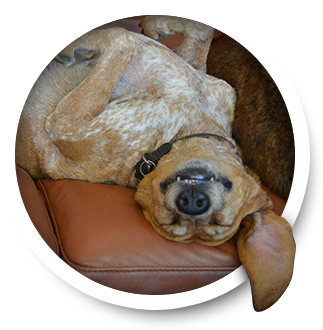
Allied Auto Works
2073 Grant Road
Los Altos, CA 94024
650.968.7227
https://www.alliedautoworks.com/
Posted on 1/11/2021

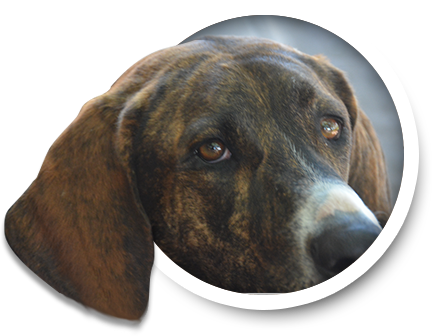
How much is enough? Depends on what you are referring to. You can never have enough bones! Hi, Duke here, and today we will ask how much is enough when it comes to tire tread depth.
Most Los Altos drivers know that tires wear out and that the wear has to do with tread depth. Most of us have heard that “bald” tires are dangerous, but most of us picture a tire with no tread at all when we think of a bald tire. And when we take our vehicles in for preventive maintenance, the technician tells us they need to be replaced long before all the tread is worn off. Just how much tire tread wear is too much? And how can you tell? Tires are and their condition is important to the safe handling of a vehicle, so it's for Los Altos vehicle owners to know the answers to these questions.
First of all, it's important to understand that there may be a legal limit to tread wear. If your tires are worn past this limit, you have to replace them to be in compliance with CA auto safety laws. That's why measuring your tread wear is part of a vehicle safety inspection.
In some jurisdictions, tread must be at least 1.6 millimeters or 2/32 of an inch thick. This standard has been in effect since 1968. But this standard has recently been called into question, and some CA professionals are arguing that it be changed.
The safety issue that has brought this standard under scrutiny is the ability of a vehicle to stop on a wet surface. When a vehicle has trouble stopping, most Los Altos drivers immediately look at the brakes as the source of the problem. But tires are crucial to safe stopping distances because they provide the traction required in a stop.
A tire's contact with the road surface creates traction, which allows for effective braking. On a wet surface, a tire only has traction if it can get to the road's surface. So tire tread is designed to channel water out from under the tire to allow it to stay in contact with the road. If the tire can't shift the water, then it starts to “float.” This condition is called hydroplaning. It is very dangerous for Los Altos drivers since the vehicle won't stop no matter how hard the driver presses the brakes. Steering control is also lost.
A recent study tested the stopping ability of a passenger car and a full-sized pick-up on a road surface covered with only a dime's depth of water (less than a millimeter). The vehicles were traveling at 70 mph (112 kph) when they stopped on the wet surface. At 2/32 (1.6 mm) tread depth, the stopping distance was double that of a new tire. The passenger car was still traveling at 55 mph (89 kph) when it reached the stopping distance it experienced with new tires.
Let's suppose that you're on a busy Los Altos road in a light drizzle and a vehicle stops suddenly in front of you. You just bought new tires and you brake hard, missing the vehicle with only inches to spare. If you hadn't bought those new tires, you would have crashed into that vehicle at 55 mph (89 kph). That is a major difference.
What if your tires had a tread depth of 4/32 (3.2 mm)? You would have crashed into that vehicle at 45 mph (72 kph). Still not a good situation. But it's better.
Now, what if you were driving that pick-up truck? You wouldn't have missed that vehicle in the first place, and you would have crashed at higher rates of speed in both of the other scenarios. The heavier your vehicle, the longer its stopping distance. It's a matter of physics.
The results of this test have led Consumer Reports and others to ask that the standard for tread wear be changed from 2/32 (1.6 mm) to 4/32 (3.2 mm). The increased standard will improve safety on the road and save lives here in CA and nationally.
Of course, until the standard changes, you'll have to decide whether you'll be willing to replace your tires a little sooner.
You can use an American quarter to tell if your tread wear is down to 4/32 (3.2 mm). Place the quarter into the tread with George's head toward the tire and his neck toward you. If the tread doesn't cover George's hairline, you're under 4/32 (3.2 mm). With a Canadian quarter, the tread should cover the digits of the year.
You can measure the 2/32 inch (1.6 mm) treadwear with a penny. If the tread touches the top of Abe's head, it's at 2/32 (1.6 mm). Tires are super important when it comes to vehicle care. But their condition has a major impact on safety. We need to decide whether to sacrifice safety for economy. Keeping our tread wear above 4/32 in (3.2 mm) is good auto advice.
A flat tire is like a bad attitude, you can't go anywhere until you change it,
Duke

Allied Auto Works
2073 Grant Road
Los Altos, CA 94024
650.968.7227
http://alliedautoworks.autotipsblog.com